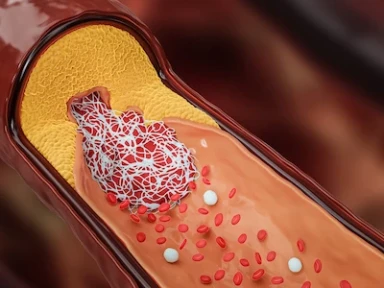{
event: "article_read",
name: `Prescription Trends of Oral Non-Statin LLTs and Their Effects on LDL-C`,
author: ``,
tags: `Cardiovascular | Dyslipidemia | Cardiovascular`,
publication_date: ``,
interaction_type: "content"
}
Prescription Trends of Oral Non-Statin LLTs and Their Effects on LDL-C
Prescription Trends of Oral Non-Statin Lipid‑Lowering Therapies and Their Effects on Low-Density Lipoprotein-Cholesterol
Key Takeaway
- This large cohort study provides:
- Definitive information regarding trends in LLT prescriptions in Germany over a period of 5 years
- Practical strategies to improve LDL-C goal achievement for ASCVD prevention
- Increase in prescription for high-potency statins (atorvastatin and rosuvastatin) and ezetimibe was noted over the duration of the study period.
- Higher prescription of non-statin LLTs was observed in patients treated by cardiologists vs GPs.
- A higher reduction in LDL-C was seen with FDC of statin/ezetimibe in comparison to separate pills; however, a large proportion of patients still remained with uncontrolled LDL-C levels.
Why This Matters
- Statins are recommended by the ESC and EAS as first-line therapy for LDL-C reduction.
- However, in patients on statin monotherapy with substantially higher LDL-C levels than the recommended goals or with statin intolerance, poor management of LDL-C levels are observed, further substantiating a need for addition of a non-statin LLT such as ezetimibe to reduce LDL-C.
- Real-world data analyzed in this study provides trends in prescription of oral non-statin LLT that may further help identify opportunities to improve the low rates of LDL-C target attainment.
Study Design
- This was a retrospective analysis using cross-sectional data obtained from the IMS® Disease Analyzer of outpatients at very-high cardiovascular risk treated by GPs and cardiologists, and prescribed LLT in Germany*.
- Inclusion Criteria:
- Patients >18 years of age
- Very-high cardiovascular risk†
- At least two prescriptions of the same oral LLT within one calendar year
- Taking LLT for at least 21 days
- Study Goals:
- To analyze prescription trends of oral non-statin LLT in Germany
- To analyze trends in the prescription of statin/ezetimibe FDC or separate pills
- To compare statin/ezetimibe FDC and separate pills in a large cohort of patients at very-high cardiovascular risk in reducing LDL-C
- Outcomes of Interest:
- Prescription trends in LLTs
- Prescription trends of ezetimibe on top of statin therapy
- Effect of statin/ezetimibe FDC or separate pills on LDL-C
Key Results
- Overall, 311,242 patients were included in the analyses.
- Baseline Characteristics: Similar across patients
- Prevalence of ASCVD: Higher in patients prescribed ezetimibe (monotherapy or in combination with statins as FDC or in separate pills) and lower in patients prescribed fibrates vs statin monotherapy
Prescription Trends in LLTS
- Statin Monotherapy (GPs vs Cardiologists): 91.6% vs 79%
- Increase in Prescription Rates (2013 to 2018):
- Atorvastatin and rosuvastatin (patients treated by GPs vs cardiologists):
- In 2013: 10.4% and 25.8%
- In 2018: 34.7% and 58.3%
- Simvastatin (patients treated by GPs vs cardiologists):
- In 2013: 81.0% and 64.0%
- In 2018: 60.0% and 37.0%
- Atorvastatin and rosuvastatin (patients treated by GPs vs cardiologists):
- Non-statin LLTs (2013-2018):
- GPS:
- In 2013: 4.6%
- In 2018: 3.6
- Cardiologists:
- In 2013: 7.2%
- In 2018: 5.7%
- No change in prescription rates for non-statin LLTs from 2013 to 2018.
- Higher in patients treated by cardiologists vs GPs
- GPS:
- Prescription of Ezetimibe:
- Patients receiving ezetimibe in 2018 (patients treated by GPs vs cardiologists): 76.1% vs 92.8%
- Steady increase over the study period
- Prescribed with statin in majority of the cases
Effect of Statin/ezetimibe Fdc or Separate Pills on LDL-C
- Reduction in LDL-C By Addition of Ezetimibe in Patients on Statin Therapy
- 23.8% (32.3 mg/dL)
- Addition of ezetimibe in patients on statin, reduced LDL-C by an additional 23.8%.
- Mean LDL-C Reduction With Statin + Ezetimibe
- FDC: 28.4% (40.0 mg/dL)
- Separate Pills: 19.4% (27.5 mg/dL)
- Reduction was considerably larger for FDC when statin and ezetimibe were prescribed in combination.
- Patients Reaching LDL-C Level of <70 mg/dL With Statin + Ezetimibe
- FDC vs Separate Pills): 31.5%
- Separate Pills: 21.0%
- Larger reduction of LDL-C resulted in better LDL-C control.
Limitations
- Data not available on medication adherence that would strengthen study conclusion.
- Reasons for physicians prescribing FDC or separate pills could not be derived from the data, potentiating confounding related to the prescribing individuals.
* Between 2013 and 2018.
† As per 2016 ESC/EAS guidelines.
- Katzmann JL, Sorio-Vilela F, Dornstauder E, Fraas U, Smieszek T, Zappacosta S, et al. Non-statin lipid-lowering therapy over time in very-high-risk patients: Effectiveness of fixed-dose statin/ezetimibe compared to separate pill combination on LDL-C. Clin Res Cardiol. 2020. doi: 10.1007/s00392-020-01740-8. Epub ahead of print. PMID: 32949286.
Related articles
MAT-QA-2200070/V1/NOV2022



-from-the-SAFEHEART-registry-(1).webp/jcr:content/Clinical%20practice%20experience%20in%20patients%20with%20familial%20hypercholesterolemia%20(FH)%20from%20the%20SAFEHEART%20registry%20(1).webp)
